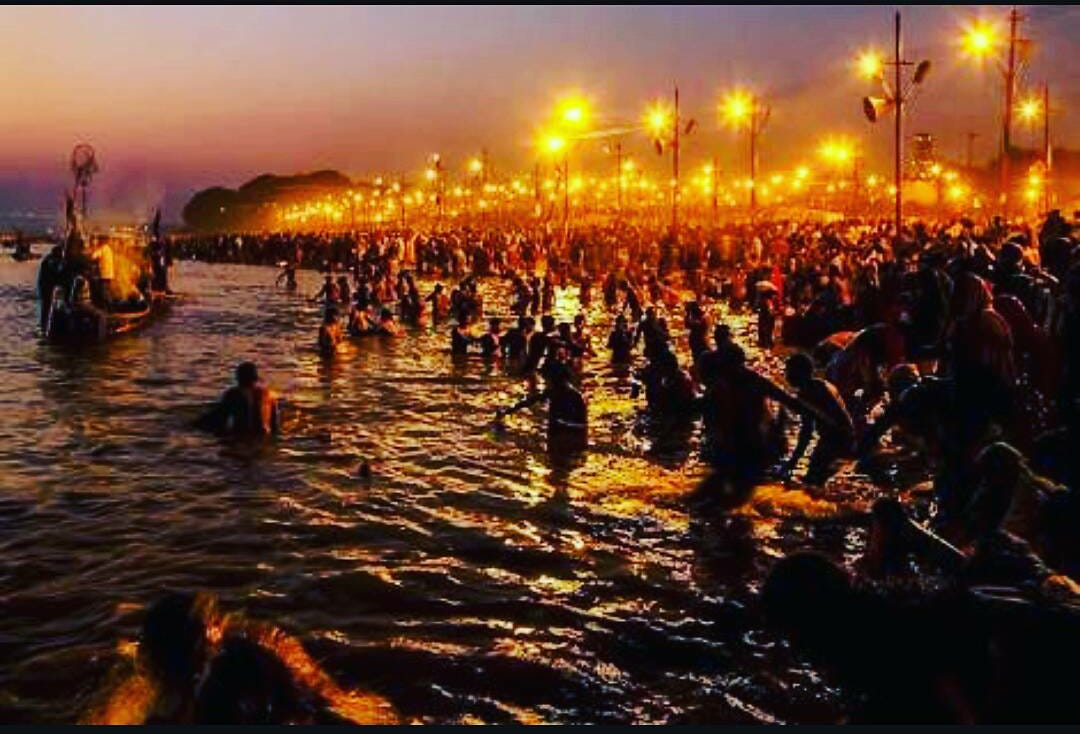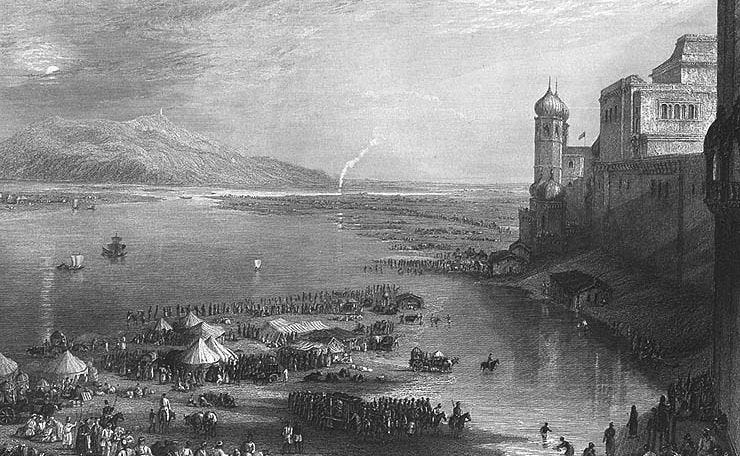PM Modi shares insights into Why was Kumbh so Significant in Indian Life?

A day before the Prime Minister Narendra Modi went to the himself, he welcomed representatives of 181 countries (9 countries representatives could not make it at the last moment due to personal reasons) who had been to the Kumbh.
As Kumbh has been designated by the United Nations as the Intangible National Heritage, it does have a significant importance in the world. Its management, the way things are handled is amazing. In a crowd of several million, this year there were cases of a few thousand who went missing. But so diligent were the police and security staff there (and this I noticed personally as well) that all of them were found within a couple of hours. That’s quite incredible!
It was decided a few years back that Kumbh will be used as a way to bring people of other nationalities to India to showcase its amazing scale and its management. This was that meeting.
Why was Kumbh so significant in Indian life?
While discussing Kumbh, PM Modi shared an interesting thought. That when the congregation happened every 3 years for Ardh Kumbh and 12 years for the Maha Kumbh, the yogis, wise men, intellectuals of the day and even Kings would come together and discuss the future work and evaluate what had been done.
https://drishtikone.com/wp-content/uploads/2019/02/PM-Modi-on-Importance-of-Kumbh.mp4
Those who want to watch the whole program, please watch the video at the bottom of the post.
Now, this obviously never happened the way modern day management professionals do it. It was more informal and dispersed. But there was an underlying movement about that. For example, I talked to this old lady of 80 years in the Kumbh this year. She has been coming to the Kumbh for last 20 years or so. She and her husband stay at the Kumbh for the entire month – take the morning 5 AM dip and so Sadhana the whole day. In that time, they also interact with people around them and discuss things in each other’s lives. Like her, there were hundred of thousands of Kalpa-vaas (Period Stay) devotees who were inhabiting the Kumbh area for acres and acres! And this entire sea of humanity was interacting and yet being alone in that area for a period of one whole month! This has been going on for several thousands of years.
Now, modern historians who just go by what people have written in their accounts and totally disjointed ones at that – one said this, another said that. Both said half the story and that too sometimes not fully understood or translated properly. And the historians have their own story which is neither here nor there. That is why, based on this “lack of evidence” (which in itself is such a disjointed and anecdotal set of writings), the historians would have us believe that Kumbh started just a few hundred years back.
The reality is that Kumbh or Magh Mela or just the even to take a dip at a certain time at Prayag has been a custom for many and thousands of years. Now, they may not have called it Kumbh but they knew when to take a dip at the Triveni (where three rivers met) for their well being.
How does a Dip in Ganga help?
And this is another misconception, which started after the foreign beliefs came to India and wanted to interpret our ways. The “sin” of the Abrahamic belief and paap of the Indian way are two very different things. Paap has a connotation which is more aligned to how much you are lacking in terms of a Sattvik life, which has been taken to be the launching pad for a spiritual journey. Very rarely does one tend to start the journey from a Tamasik lifestyle. That is the only importance of being Sattvik. For, like every Yogi and Master, Sri Krishna also urged Arjun to go beyond the Trigun-mayi (made of three gunas – Tamasik, Rajasik and Sattvik) Maya. To go beyond the Sattvik is the way.
The aim, therefore, was not to “wash off the sins” but to be in the presence and be immersed in waters that where so many great beings had been in and graced with their whole being. Such waters brought with them their energy. If one could not go to them, then immersing oneself into those waters was a good substitute. Listen to the Sadhguru on why Ganga’s water is important:
In contrast to washing off the “wrong doings”, the devotees were working on their inner self. To make one less “me” and more embracing. Unlike the strengthening of the person that the removal of sins that the Abrahamics are after, the Dharmic way to remove the paap was to remove any vestiges of ego and person that one had taken on. Idea was not to create a purer self of you, but to merge and have no “you”.
And, that is where Kumbh worked wonders. With so many – where no one was called, no one invited, no one waiting and indeed no one was really organizing (this started recently) – people there, it was easy to lose oneself and merge into the larger humanity. And, when you experienced yourself as a minuscule part of the whole humanity, at that time if you were in the presence of waters which had been graced by so many amazing Yogis and beings at the upper stretches of the Himalayas, chances were that you may awake.
That was the main purpose of Kumbh.
And, in that, the wise and the influential would find their “colleagues” and have their own discussions lasting a month. That created a silent, underground, un-communicated movement. That is what PM Modi was referring to.
https://drishtikone.com/wp-content/uploads/2019/02/PM-Modi-with-representatives-of-190-countries.mp4




